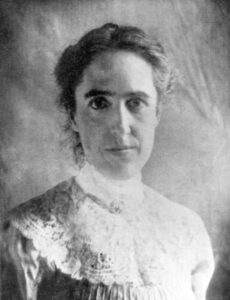
For a scientist (and indeed for anyone thinking scientifically about the world around them), every day holds the possibility of discovery — of coming up with a brand new idea or of observing something that no one has ever seen before. Vast bodies of knowledge have yet to be built and many of the most basic questions about the universe have yet to be answered:
- What causes gravity?
- How do tectonic plates move around on Earth’s surface?
- How do our brains store memories?
- How do water molecules interact with each other?
We don’t know the complete answers to these and an overwhelming number of other questions, but the prospect of answering them beckons science forward. “Eureka!” or “aha!” moments may not happen frequently, but they are experiences that often motivate scientists.
Discoveries, new questions, and new ideas are what keep scientists going and awake at night. But they are only one part of the picture. The rest involves a lot of hard (and sometimes tedious) work. In science, discoveries and ideas must be verified by multiple lines of evidence and then integrated into the rest of science, a process which can take many years. And often, discoveries are not bolts from the blue. A discovery may itself be the result of many years of work on a particular problem, as illustrated by Henrietta Leavitt’s stellar discovery …
STELLAR SURPRISES

Astronomers had long known about the existence of variable stars — stars whose brightness changes over time, slowly shifting between brilliant and dim — when, in 1912, Henrietta Leavitt announced a remarkable (and totally unanticipated) discovery about them. For these stars, the length of time between their brightest and dimmest points seemed to be related to their overall brightness: stars with slower cycles are more luminous. At the time, no one knew why that was the case. Nevertheless, this discovery allowed astronomers to infer the distances to far-off stars, and hence, to figure out the size of our own galaxy. Leavitt’s observation was a true surprise — a discovery in the classic sense — but one that came only after she’d spent years carefully comparing thousands of photos of these specks of light, looking for patterns in the darkness.
Take a sidetrip
Read more about Henrietta Leavitt’s investigation of variable stars.
To see how the prospect of making a discovery beckons science forward, explore The structure of DNA: Cooperation and competition.
Some scientists are motivated by the prospect of discovery, but this is often supplemented by the desire to solve a practical problem. Learn more in Meeting society’s needs in our Science and society section.
- You can help your students appreciate the excitement of scientific discoveries in many ways — for example, by discussing science news stories, new and compelling research, or the announcement of the Nobel prizes in science. Most importantly, you should model the excitement and curiosity for science that you want to inspire in your students. One way to do this is to take time to legitimately engage student questions about science topics, even if they stray somewhat from the designated content. After all, scientists do not limit their curiosity to topics narrowly defined by their previous work.
